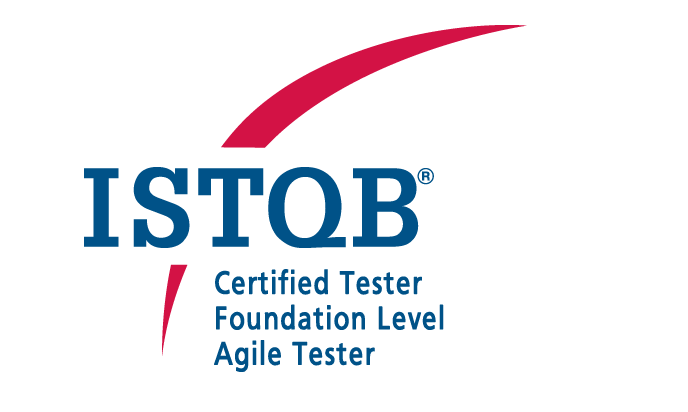Agile Software Development
- Agile Manifesto
- Agile Methodologies (Scrum, XP, Kanban, SAFe etc.) and DevOps
- Comparison of Agile and Traditional Models (Agile vs Sequential Models)
- Scrum Framework (Artifacts, Roles and Meetings)
Agile Test Methods and Techniques
- Test Levels and Test Types
- Test Effort Estimation in Agile
- Risk Based Testing
- Test-Driven Development
- Acceptance Test-Driven Development
- Behavior-Driven Development
- Release and Sprint Management
Agile Test Toolchain
- Agile Testing Quadrant
- Agile Testing Tools
- Collaboration and Communication Tools
Agile Engineering Practices & Activities
- Epic, Feature, User Story, Task and Acceptance Criteria
- Test Role in Agile Projects
- Coaching the Test Team & Management
- Test and Defect Management
- Configuration and Release Management
- Continuous Integration, Continuous Delivery
- DevOps
- Test Automation
Send me more information about
ISTQB® Foundation Level Agile Tester
About the Course
Agile testing is a relatively recent approach to software testing that adheres to the Agile Manifesto’s concepts of agile software development.
On an Agile project, a tester can function in a different way than on a conventional project. Testers must consider the concepts and ideals that underpin Agile projects, as well as how testers, along with developers and business leaders, are an important part of a whole-team strategy.
Business Outcomes
The following are the Business Outcomes that a Foundation Level Agile Tester certification holder is expected to achieve:
- Work in a cross-functional Agile team while understanding the concepts and fundamentals of Agile software development.
- Align current testing expertise and practice with Agile values and concepts.
- Assist the Agile team in the creation of test-related tasks.
- In an Agile project, use appropriate testing approaches and techniques.
- Participate in test automation exercises with the Agile team.
- Assist stakeholders in identifying user stories, scenarios, requirements, and acceptance criteria that are both understandable and testable.
- Use effective communication styles and platforms to collaborate and exchange knowledge with other team members.


